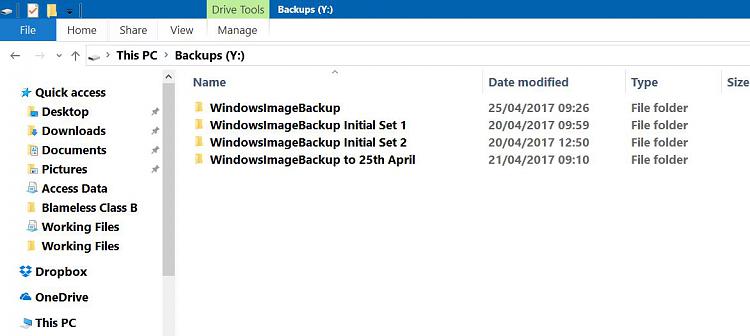New
#1
Behavior of Windows 10 system imaging
I have a new desktop with a 500 GB SSD [C:], a 2 TB HDD [D:], and a 2 TB HDD [Q:].
C: is the boot drive, and it contains most of the apps, along with anything that requires speed.
191 GB consumed
D: contains some big items that are not as speed critical.
345 GB consumed
Q: is the backup drive. I do local backups of selected folders of this computer, and of another desktop computer.
249 GB consumed
I want to run the Windows system image, placing that image on Q:
What will that image look like on Q: ?
Is it a single file, stored in Q: (GOOD),. Ih that case I can image another computer and store that image on Q:, too.
Or will the image "own" the entire drive? (BAD)
Last edited by margrave55; 23 Apr 2017 at 11:52.


 Quote
Quote . Second images are kept on a NAS.
. Second images are kept on a NAS.

